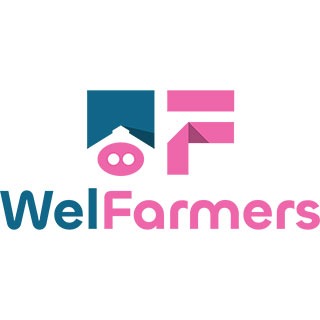Top 5 best practices for space allowance and flooring
The experts in this thematic group selected these five best practices from the initial list of 22 candidates.
Following this round, where the Top 5 Best Practices have been selected, the process will continue with the final selection of the 3 Winning Practices.
Drained Flooring
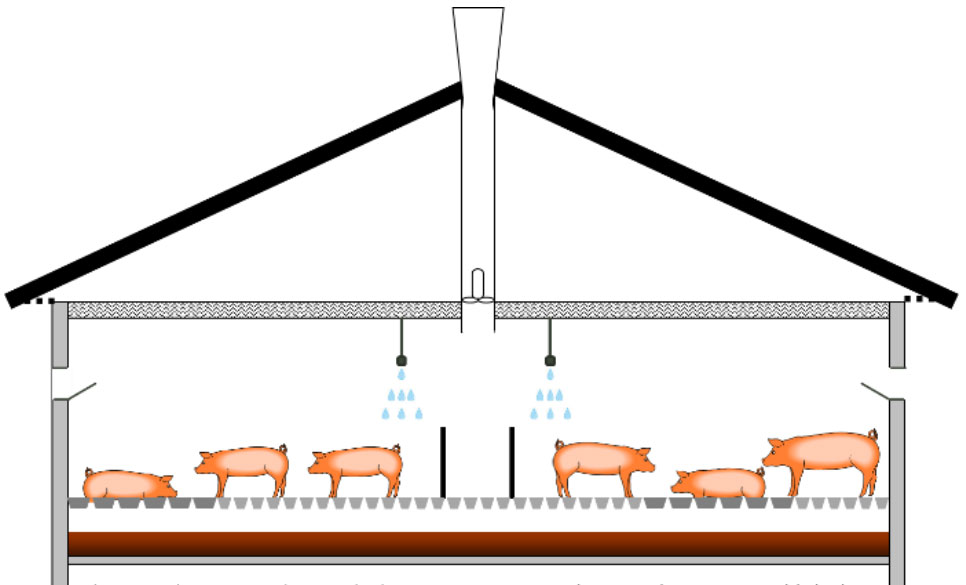
The type of flooring in finisher units is important because it helps pigs divide the pen into areas for resting and for dunging. A solid floor reduces ammonia evaporation and provides pigs with a more comfortable resting area, resulting in improved animal welfare. Conversely, a slatted floor is essential for effective slurry drainage.
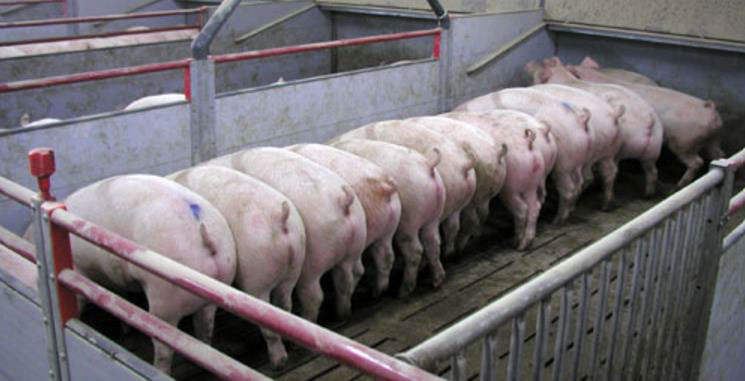
Drained flooring is characterised by slot openings covering a maximum of 10% of the total pen area. In contrast, slatted flooring has slot openings covering 18-20% of the total pen area. Drained flooring offers several benefits in pig farming. By allowing waste to pass through, it helps to maintain a cleaner, drier, non-slip floor, which can reduce environmental impact. Frequent discharge of the manure will result in low emissions from the slurry.
It also aids the pigs’ thermoregulation by preventing them from lying in wet areas, which is crucial for their comfort and health. Providing a dry and comfortable resting area is essential for the pigs’ well-being.
New and old, both works
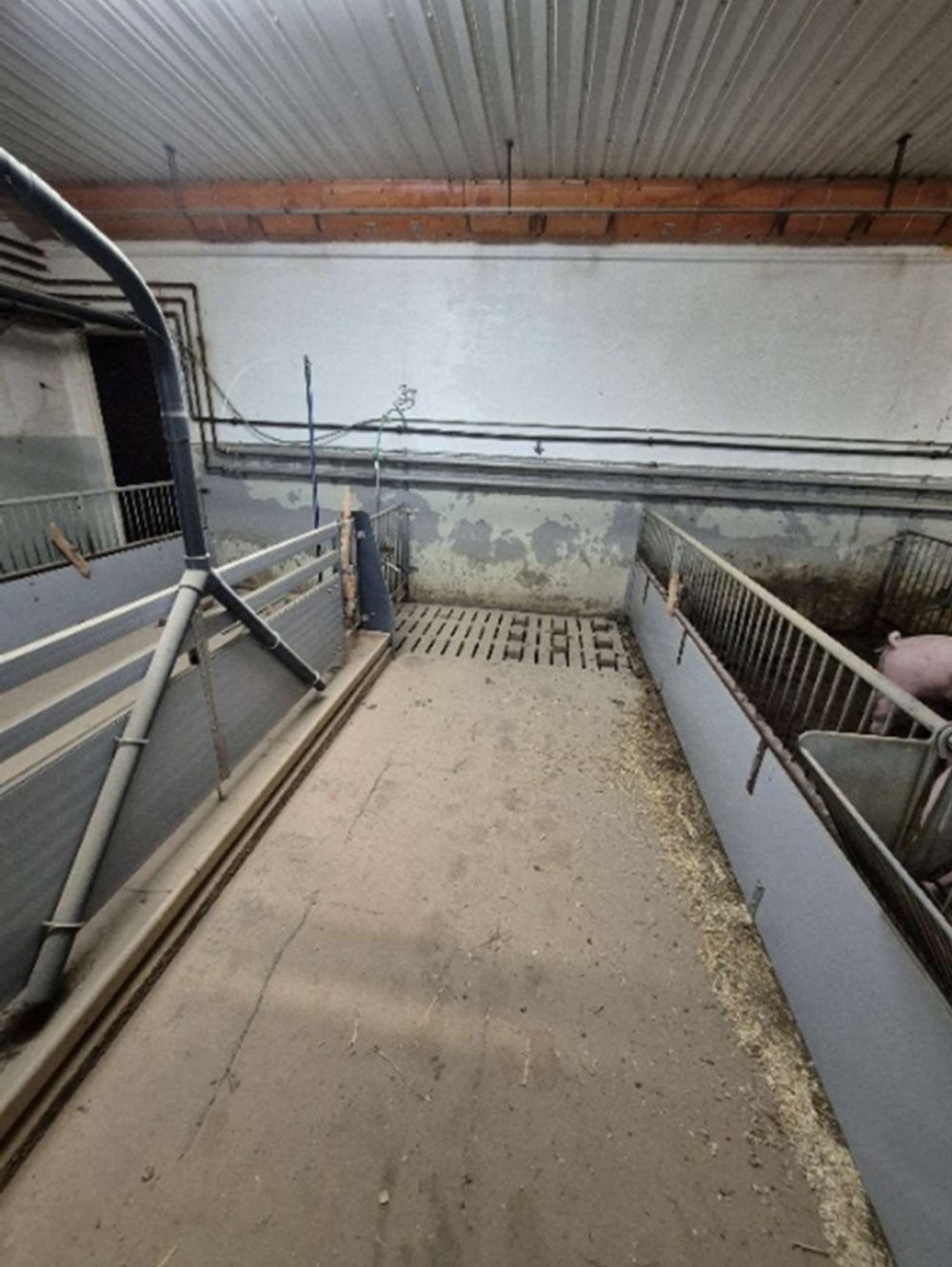
This farm has been raising pigs for decades. The new building, equipped with the latest technology, was constructed in 2018 to provide stable and comfortable conditions for the pigs and to minimise stress factors. Even temperatures over 30°C are not a problem if air circulation is good and moisture is kept under control.
The pen has been designed based on knowledge of pig behaviour to ease the workload of the person caring for them.
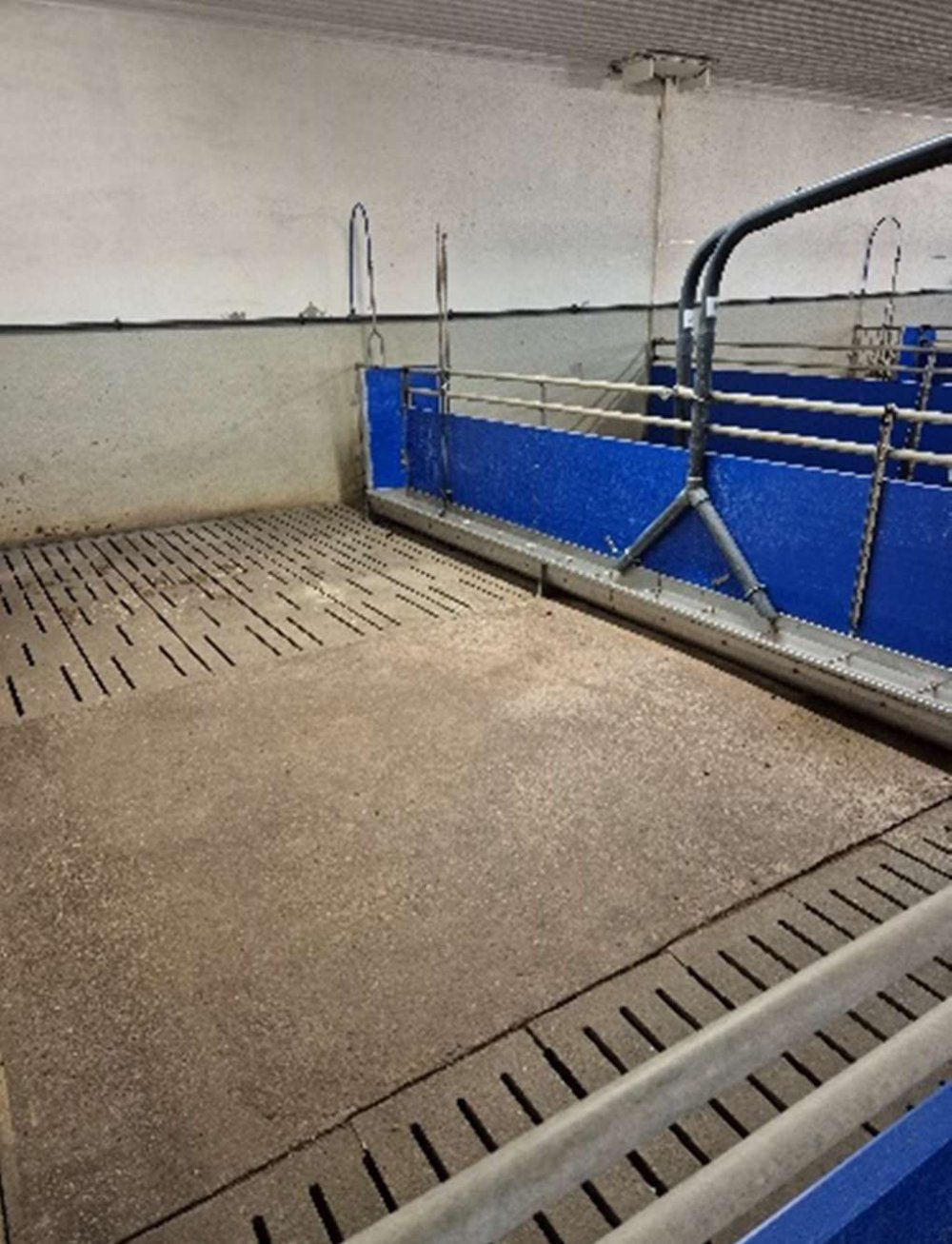
There are two manure areas because pigs like to use the corners as toilets. The air conditioning is adjusted so that the most comfortable area for lying down is on the solid floor. Long troughs enable the pigs to eat together and prevent rivalry over feed. Small amounts of sawdust and straw are provided daily to fulfil their rooting needs. Wooden sticks are provided for enrichment. Some are kept in a holster and others are screwed to the fence, enabling them to rotate.
However, similar results can be achieved in the old barn, which was renovated in 1997. The animals are kept in smaller groups there. The slatted area has concrete stones attached to the slats to prevent the pigs from using it as a resting area. The key is to keep the premises dry, draught-free, and well-ventilated. Small amounts of straw and sawdust are added to the floor each day. Straw racks are used if necessary.
Pens for smooth production
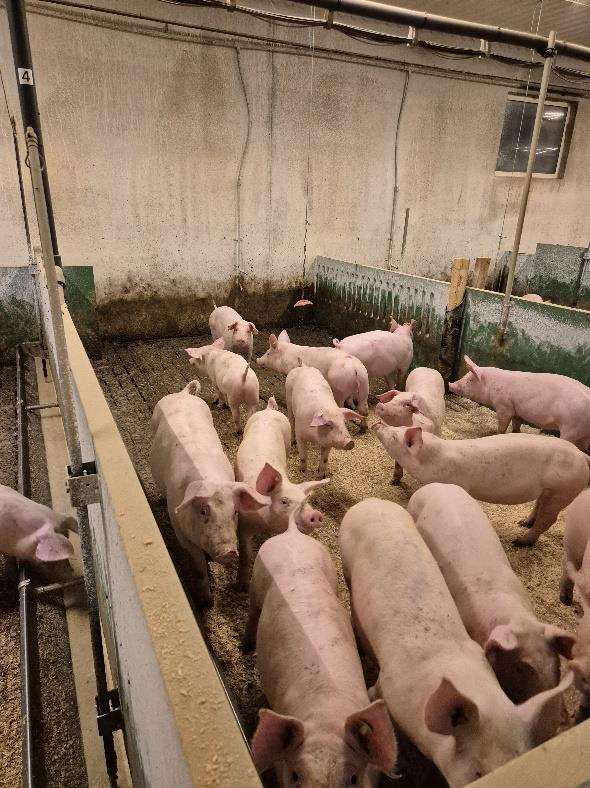
This farm was renovated in 2020. The pens are approximately 3.5 metres wide and 4.5 metres long. This allows the pigs to avoid each other if they are in conflict. Each pig has 1.2 m² at the end of the production cycle, when it weighs around 135 kg. At the end, there are a maximum of 13 pigs per pen.
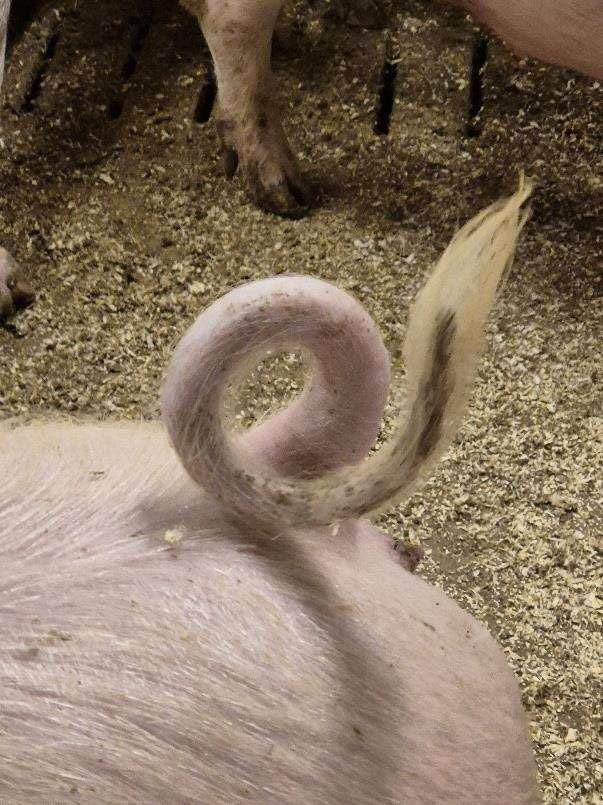
A long trough runs along one side of the pen, enabling all the pigs to eat together. The front of the pen is made of solid concrete (40%), the middle is a partly slatted area (30%), and the end is a fully slatted area (30%). An irrigation pipe on top of the slatted area keeps the defecation area damp to prevent the pigs from using it as a lying area. The large amount of slatted area reduces the need for cleaning. The solid area is covered with sawdust, which is added daily. The layer of sawdust is about an inch thick. All pigs have room to rest on the solid area. In addition, there is a wooden stick and a rubber plate to provide enrichment.
The sawdust does not block the slurry pits, which use vacuum technology. The slurry is used as fertiliser in the fields.
Solid flooring with extra space for finishers
Ninety-five percent of finisher facilities in this country have fully slatted flooring and slurry is stored in an underground tank until it is spread on fields. This facility features solid flooring, a higher space allowance, and two accessible areas for pigs, as well as a slurry removal system for better control of environmental emissions. It has been operational since 2023 and can house around 200 fattening pigs in eight pens.
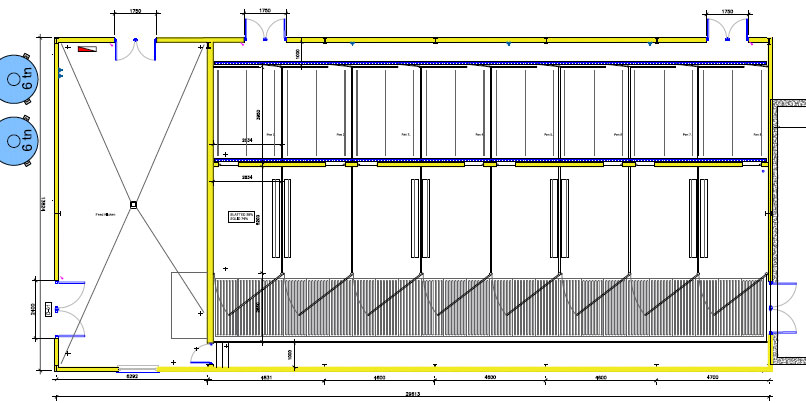
It is designed for low emissions to reduce environmental impact whilst improving welfare. It has two areas: one naturally ventilated and the other mechanically ventilated. The naturally ventilated area has one open side, which is controlled by an automatic curtain. Mechanical ventilation in the other area is provided by fans that create a positive air pressure flow.
The total flooring area is 70% solid and 30% slatted. Slurry is removed from under the slats via a scraper into an external covered tank.
Good space allowance microclimate and environment
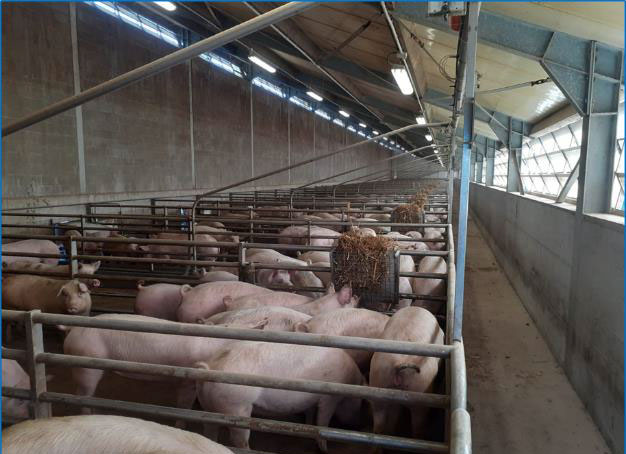
This is a modern pig farm located in an area known for producing heavy pigs. Built in 2016, it aims to maximise animal welfare and minimise environmental impact and antimicrobial use. The barns have optimal insulation for the pigs’ thermal comfort, a high roof pitch of 35° facing south for maximum efficiency of photovoltaic panels, and natural cross ventilation controlled through automatic window adjustment based on the
internal ammonia level (max. 10 ppm) and carbon dioxide level (max. 3000 ppm). Pig slurry is processed and deodorised in the on-site biogas plant.
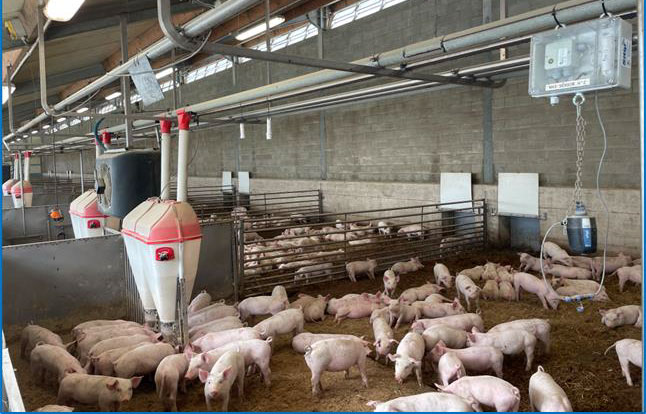
The farm has a capacity of 860 sows in cage-free farrowing pens, 6,000 weaners housed on a straw-bedded solid floor (0.5 m² per pig) and 7,000 finishers housed on a thermal-insulated solid floor inside and a slatted floor outside (1.25 m² per pig in total).
- The pigs are kept with intact, undocked tails (98–97% are certified as antibiotic-free from birth).
- Low mortality rate: 4% in weaners and 2% in finishers.
- Good performance: FCR 3.4, ADG 850 g/day.
- Low carbon footprint: 1.06 kg CO₂e/kg live weight compared to a range of 0.6–6.75 kg CO₂e/kg in pork production (Yang et al., 2023);
- Certified antibiotic-free by the SGS certification body.

